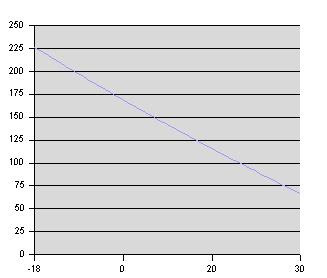 Aluminum strip on the other side of the resistors.
Aluminum strip on the other side of the resistors.
Sunday, January 14, 2007
Water level

To sense the water level I needed something solid state, durable and easy to make. The above circuit is the design I'm going to use. It consist out of 10 resistors of 1k in a serial configuration and one of 10k to limit current. It will be connected to 5v in order not to harm any fish. How it works? The resistors of 1k will be mounted on a plastic tube and a aluminum strip will be glued to the other side. When the water level is very high all the resistors will be shorted and no current will go the the Arduino. When the water level is very low all the 1k resistors will be active, in total 10k, so current will go to the Arduino. When the water level is somewhere in between some of the resistors will be shorted and some will not be shorted, resulting in a different current.
Friday, January 12, 2007
Switching 220VAC

I'm going to use a S202T01 to switch the 220V. They are easy to get, you can load them with 2A and where made for this job. The 220 Ohm resistor is tested and works OK with a Arduino. For Pompie the circuit has to be double for the air- and waterpump.
The S202T01 consists out of two triacs and a led to switch them on and off. The AC and DC parts are completely separated and to be safe a used screw-connectors to wire them to 220V.
Next: water level sensor
Wednesday, January 10, 2007
Temperature


In order for Pompie to work correct Pompie need to sense the temperature. The circuit on the left uses a 15k resistor to limit current, a 15k NTC for the temp. The reason for 15k is the graph of measurements shows an almost strait line, another reason is that the scale is perfect for the dot on the globe I live. Say you need a NTC to measure the temperature and your location it will never be lower than let's say 10C its advisable you use different values, start with 5k and make a similar graph. The third reason is that the program can detect a faulty wire. To make a graph:
- Melting water = 0C
- My freezer freezes at -18C
- My central heating is set to 20C
- My (and your) hands are about 32C
Code to test the NTC is the same as the tutorial for the potmeter.
http://www.arduino.cc/en/Tutorial/Potentiometer
Next will be switching 220VAC
Monday, January 8, 2007
Pupose

My pond has two parts:
- A normal pond for plants and a few goldfish.
- A natural filter, gravel, sand and plants to filter out any nutrients and poo produced by the goldfish.
This is an excellent job for the Arduino board, pump and air will switch 220VAC and three AD ports will be used to sense the temperature.
- At the surface of the pond.
- One meter in the air.
- In the filter.
The whole program needs to be fuzzy and datacollecting just for fun and usage of the USB / Serial port.
This is the Arduino Pompie blog
Pompie is a device to control the pump of my pond. It's based on the Arduino board. To help others I publish my findings, problems and code on this blog.
Have fun with it...
Have fun with it...
Subscribe to:
Posts (Atom)


